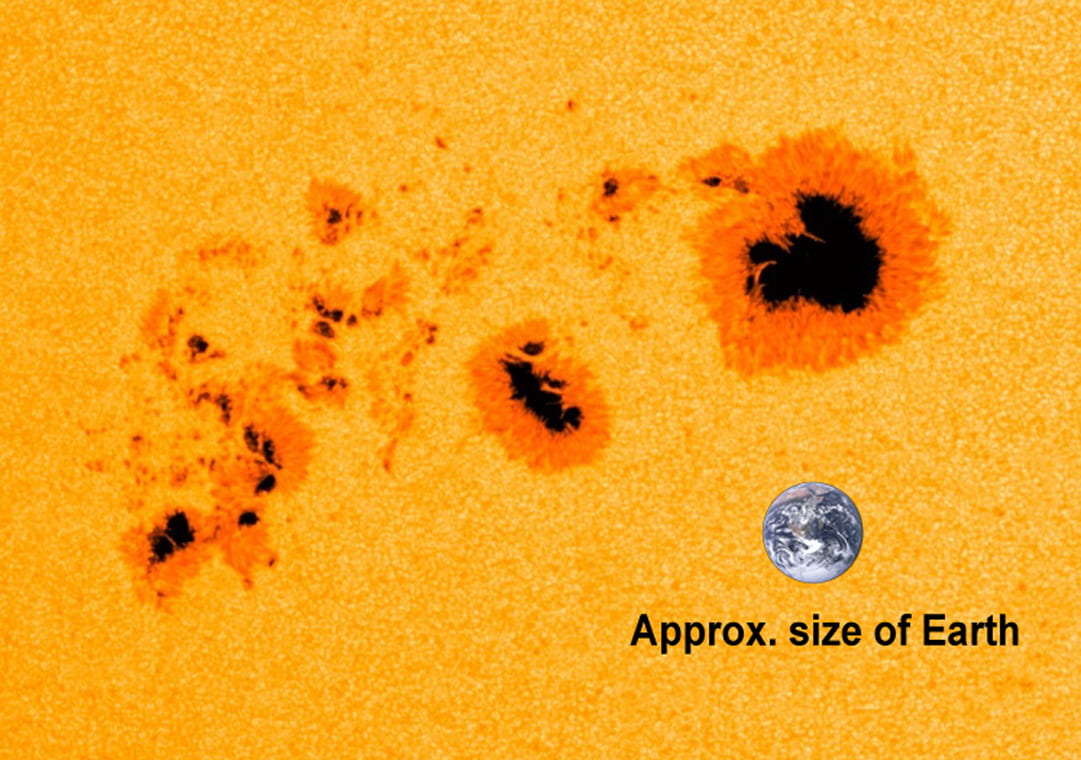It’s easy to think of the sun as a simple bright sphere in the sky, constant and unchanging; but, that is far from reality. The sun is dynamic, with many solar flares, cells of convection, and even storms. One of the easiest changes to see are sunspots, which are located on the surface of the sun (stars don’t have a solid surface like Earth does, but the photosphere layer is usually referred to as the surface). You can see sunspots using a white light solar filter, or by looking through the solar telescope at the Kirkwood Observatory on campus.

Sunspots are dark areas on the surface of the sun, which appear dark because they are cooler than the surrounding area. However, since we are talking about the Sun, cooler means 3800K (6380℉) instead of 5800K (9980℉) Sunspots are cooler because the local magnetic field suppresses convection and prevents heat inside the sun from rising toward the surface. The magnetic field also exerts pressure, which keeps warmer gas away from the area. These sunspots can vary in size from too small to see from Earth to even larger than the Earth!

A sunspot often lasts a few weeks before it vanishes, but the frequency of new sunspots also varies. Since the 19th century, astronomers have been counting the number of sunspots each day, and we’ve discovered that there is an 11 year cycle of solar activity. A typical year at a solar maxima will have between 200 and 300 sunspots per day, compared to a typical minimum number of 10. Many of these sunspots are tiny and only visible with special instruments, but large sunspot groups can be seen by simply projecting the sun’s light onto a sheet of paper with lenses. At the end of a cycle, the magnetic field flips; in other words, the north pole becomes the south pole, and vice versa.


We’re currently in the minima of a cycle, meaning that solar activity is low and there are fewer sunspots being produced. This cycle is quieter than the previous cycle, leading to many weeks in a row with no sunspots at all. But, a minimum doesn’t necessarily mean that nothing is happening. During a minimum, the sun has a weaker magnetic field, meaning that fewer cosmic rays are deflected and, thus, are able to pass into our solar system. Additionally, the sun cools slightly, causing our upper atmosphere to also cool and contract. However, sunspots aren’t the only thing we can see from Earth. Even during a solar minimum, there’s a strong chance that you can see solar prominences, or arcs of plasma from the surface of the sun, with a filter designed to look at a narrow range of red light, such as an H alpha filter.
If you want to test your luck, come to the Kirkwood Observatory the first Saturday of each month — including today! — or visit any time during Science Fest!
Edited by: Kat Munley and Evan Arnet

I loved the artcile